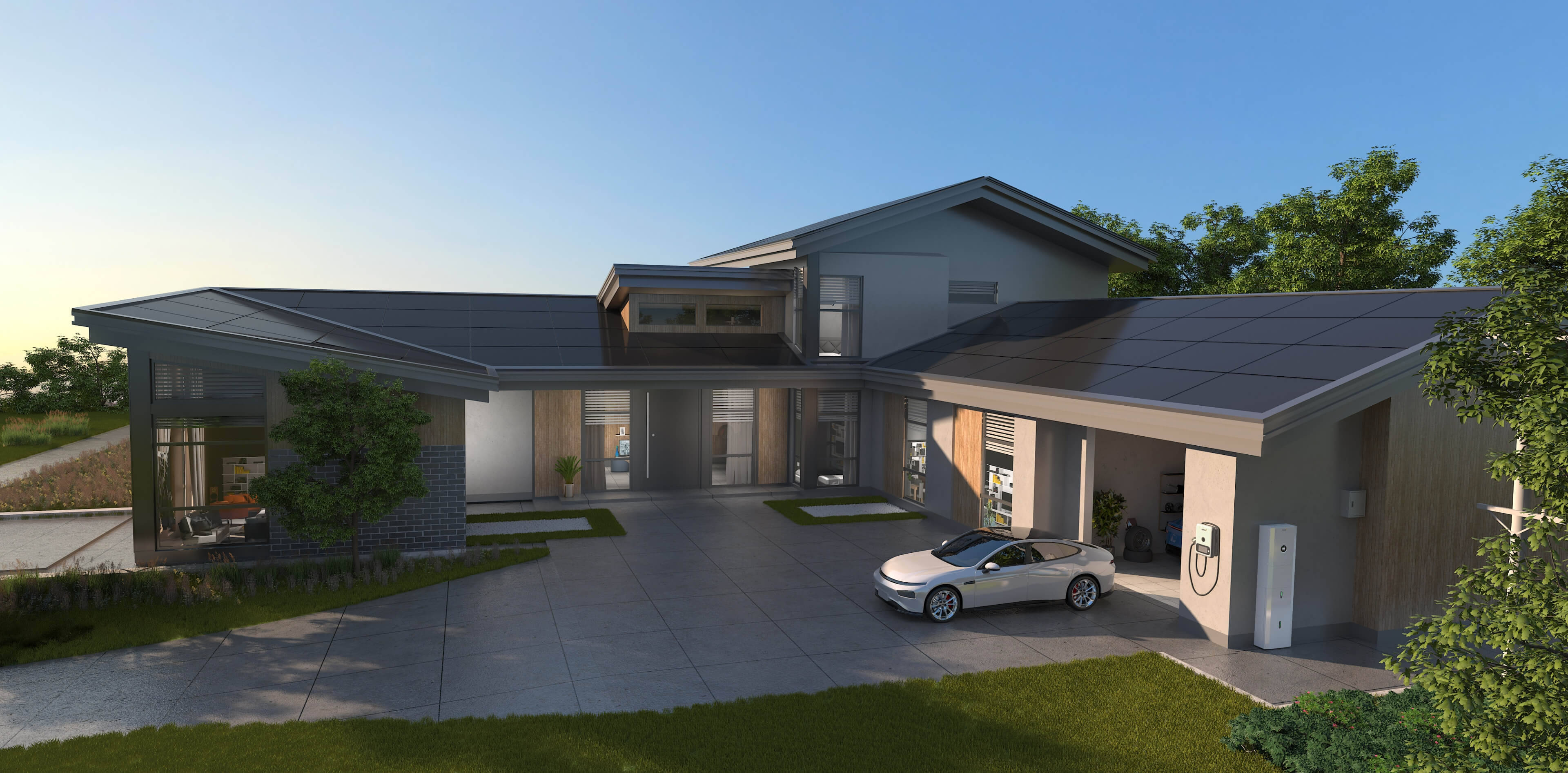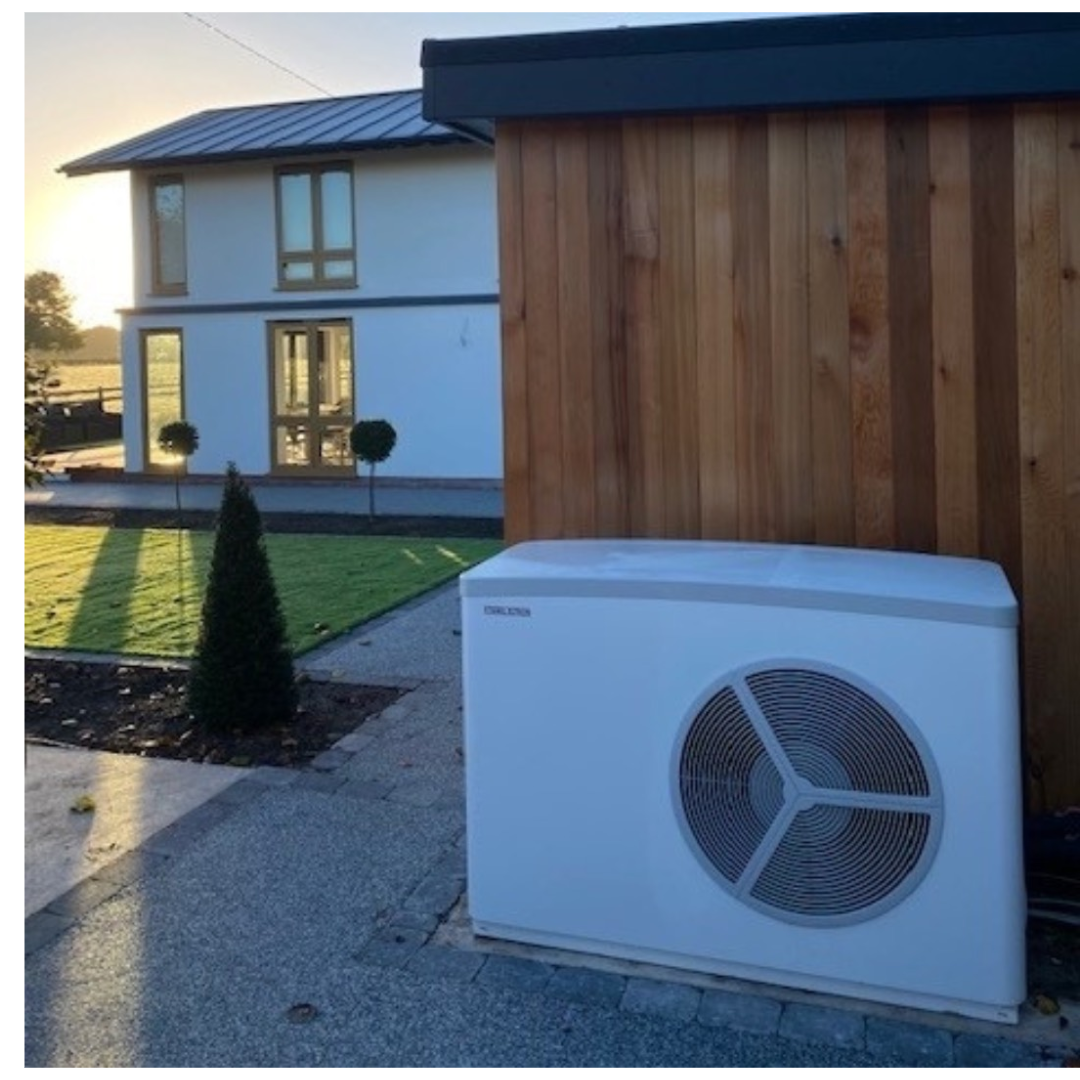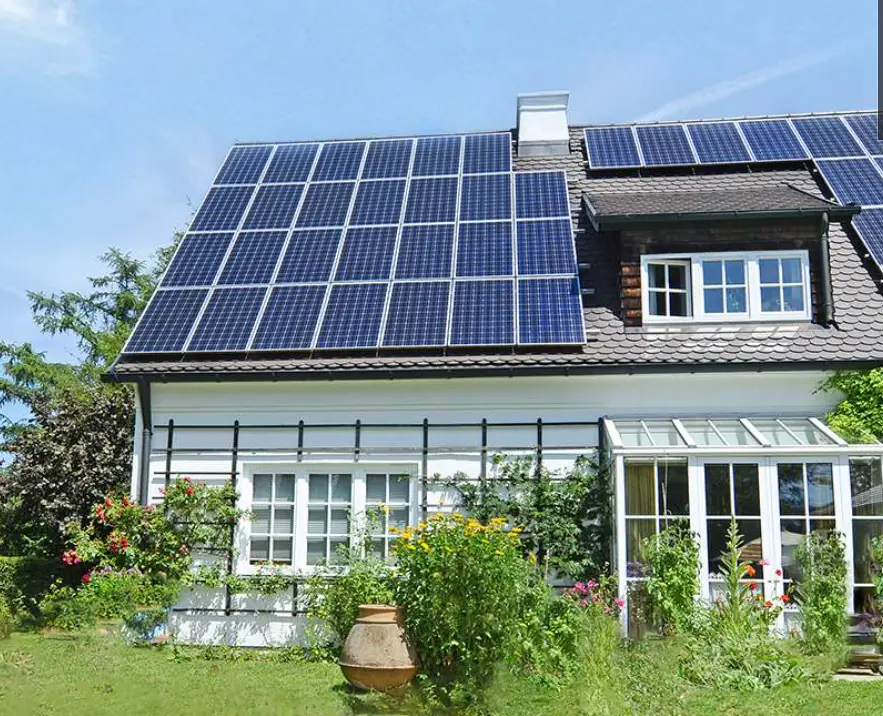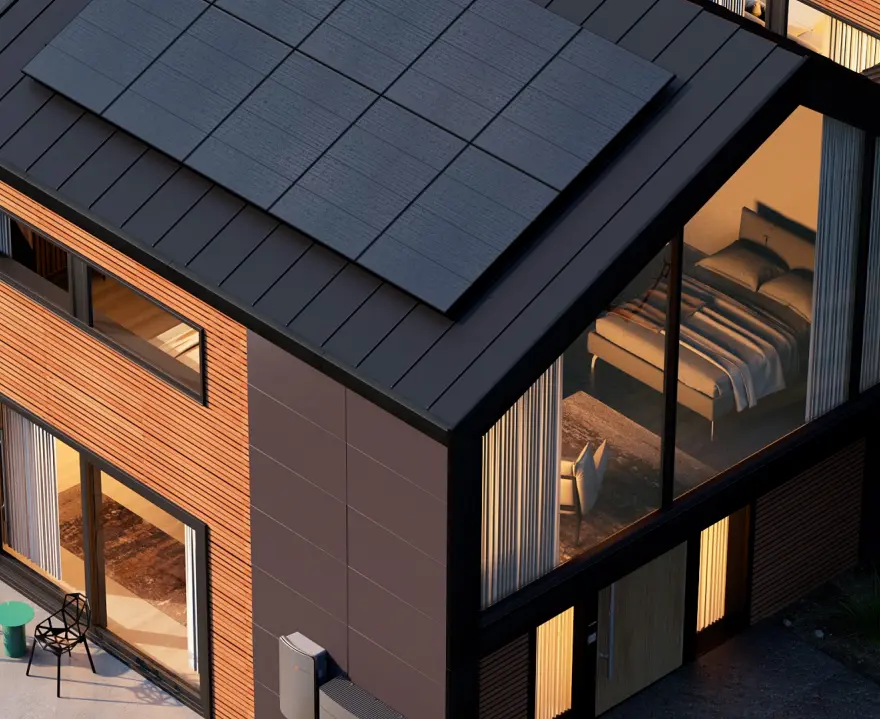
The REA Solar Panel Brand
REA (also known as REA Power) is an Australian solar panel manufacturer, best known for their range of Fusion and Fusion 2 PV modules.
The brand supplies high quality units offering efficiency in the range of 22-24%, slightly higher than the industry average.
Their most popular panels for residential properties sit in the 420w-450w range and come complete with a 25-year warranty, which is comparable to other leading brands including LONGi and Panasonic.
Below, we’ll review their Fusion 2 solar panel range and investigate:
- Prices (with and without installation)
- Warranty
- Efficiency
- Degradation rates
- REA’s monitoring system
You can get quotes on your system from leading brands using our solar panel quotation tool here.
The Cost of REA Fusion 2 Solar Panels
Prices for Panels
Prices for REA 2 Fusion solar panels tend to sit in the £185-£200 range depending on their output. This is the average price per panel.
With a typical residential installation needing roughly 12 panels, you’d expect to pay up to £2,400. This price is just for the panels; the likes of installation, fixings and controls would be extra.
By comparison, leading brands such as LONGi are available at a much lower cost.
To match the REA Fusion 2 in terms of performance, output, efficiency and warranty, you’ll want a unit such as the Hi-MO X6.
And as you can see from a quick Google search, you shouldn’t be paying more than £90 per panel.
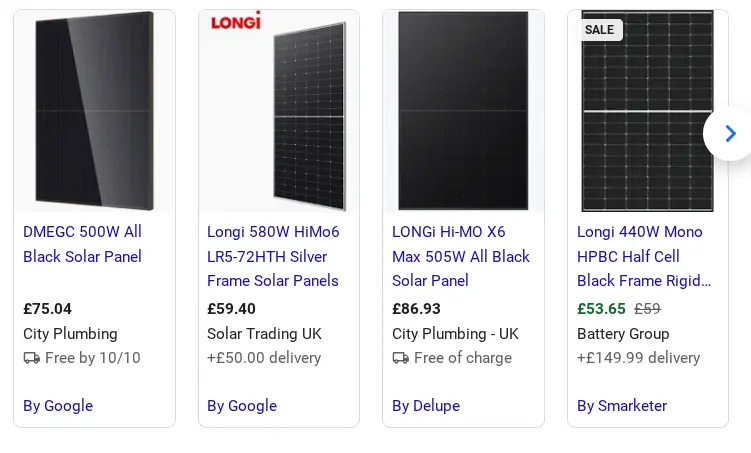
For the LONGi Hi-MO X6 you’d be looking at £1,080 for 12-panels. Essentially, you’d be paying £1,320 more for REA Fusion 2 solar panels (not including installation).
So, whilst the REA Fusion 2 is a high quality and durable option, there are definitely cheaper yet comparable options out there.
Prices for Panels & Installation
So, how does that affect the overall installation price?
We’ll use LONGi as the base here, given their solar panel prices are much cheaper.

A 12 panel system including the likes of a hybrid inverter, bird guard and mounting equipment is going to cost £5,893; that's the price without a solar storage battery.
With REA Fusion 2 panels costing £1,320 more for a 12 panel setup, you'd expect to pay £7,213 for an equivalent system. Again, this is the price without a storage battery.
Whilst a solar storage battery isn’t essential, installing one is advisable. Any excess electricity your solar panel system generates in the day can be used in the evenings (when solar panels aren’t productive). That’s going to remove the need to purchase energy from the grid.
If your battery is too small to store all excess electricity, this can be sold back to the grid. Although positive (as it provides you with a small income), this is a last resort. If you need to repurchase electricity during times your solar panels or battery can’t cover demand, you’ll pay more than what you sold it back to the grid for initially.
Whether you plan to use LONGi, REA or another solar panel brand, it’s likely your installer will recommend a leading battery brand such as Enphase, Sunsynk or Alpha. Expect battery prices to be in region of:
- ✔ Small 5.3kW: £2,495
- ✔ Medium 10.6kW: £3,745
- ✔ Large 15.9kW: £4,995
Using our solar panel pricing tool here, you can get prices for your system on-screen, with or without a battery.
Or, to read more, click through to our guide covering solar battery prices here.
REA Fusion 2 Solar Panel Features
Warranty
REA Fusion 2 solar panels come with a long 25 year warranty. This is a typical warranty for a leading solar panel brand and the same as what LONGi offers on their Hi-MO X6.
If you're looking at solar panels from brands that aren't LONGi or REA, make sure they have a minimum warranty of 25 years. If not, you could be footing the bill for not just new panels if they break, but the cost to install them too. Some manufacturers offer a warranty as low as 15 years which simply isn’t enough.
A slightly added benefit of the REA warranty is it's backed by a third party insurance company (in this case, Munich RE). So, if REA was ever to get into financial difficulty, you'll still be able to access the benefits of your warranty thanks to Munich RE.
Efficiency
The REA Fusion 2 is one of the most efficient solar panels on the market. The majority of solar panels from brands supplying into the UK see efficiency levels of around 20%.
For the REA Fusion 2, that figure is 23.9%. That's comparable to the LONGi Hi-MO X6, which sits at 23.2%, both being much higher than the industry average.
The Fusion 2 is able to hit these efficiency levels for two reasons.
Firstly, it uses a N-type TopCon cell. N-type TopCon cells are known for offering high efficiency, excellent performance during extreme temperatures, less prone to efficiency drops when shaded and being extremely durable.
Secondly, the REA Fusion 2 is bifacial. Most solar panels are only able to capture energy from one side, limiting their overall efficiency. A bifacial panel such as the Fusion 2 captures from both the front and rear side.
Whilst a lot of factors affect how much extra energy your system can produce (roof tilt angle and orientation for example), bifacial panels generally produce 5-10% more electricity than a nonbifacial panel.
Degradation Rate
One thing worth investigating when purchasing solar panels isn't just their efficiency, it's their expected degradation rate.
Solar panels lose efficiency over time and that's going to result in your system producing less electricity than it did on day 1.
Typical solar panels will degrade at somewhere between 2-3% in year one and up to 0.7% in subsequent years.
As you can see from the graphic below, that’s going to result in a panel operating at just over 80% of initial efficiency after 25 years.
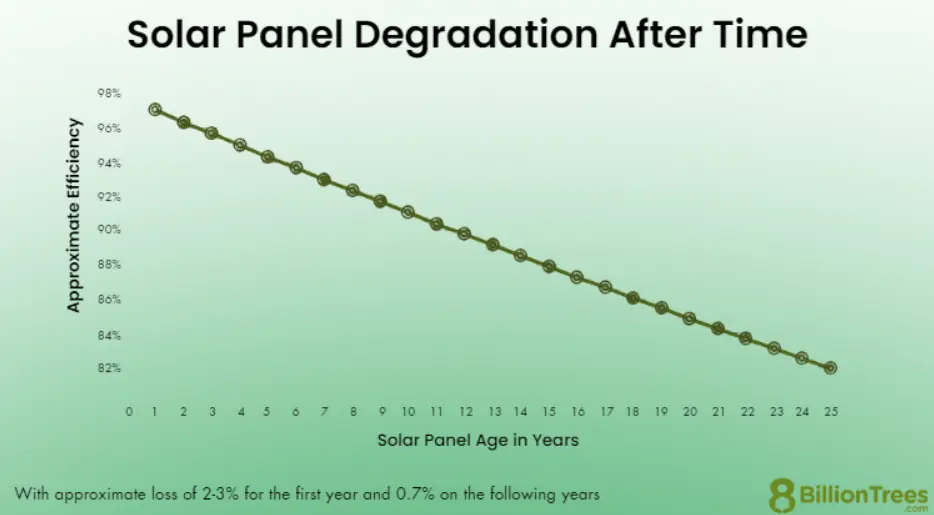
Leading brands such as LONGi and REA offer much higher levels of performance.
The REA Fusion 2 shouldn't lose more than 1% efficiency in year 1 and no more than 0.4% per year (up to year 25). By year 25 that's going to result in the panel operating at almost 90% of its original efficiency, rather than that of 80% you'd expect from an "average" solar panel.
The degradation rate of the REA Fusion 2 is comparable to the LONGi X6. The X6 is covered by a performance warranty so that even at year 25, it would operate at 88.90% of its original efficiency, slightly higher than the 88.40% you’ll get from the REA Fusion 2.
Monitoring
Monitoring your solar panel system is a great way to maximise savings. When coupled with an Enphase battery, you'll be able to monitor your REA solar panel system 24/7 and remotely via both mobile and desktop.
Their app enables users to analyse panel level data, making a unit that's underperforming easy to spot. The app also includes the likes of earnings (via the Smart Export Guarantee) and savings reports as well as energy consumption data.
Most importantly, the app offers installers the ability to login to diagnose issues with the system on a remote basis. That's going to save both the time and money that are associated with an on-site visit!
Ready to get prices on your system? Use our solar panel pricing tool here and get quotes for a system inclusive of a 25 year warranty.
Looking for a new boiler quote?
Try our free quote tool. You'll have your personalised quote in under a minute.




